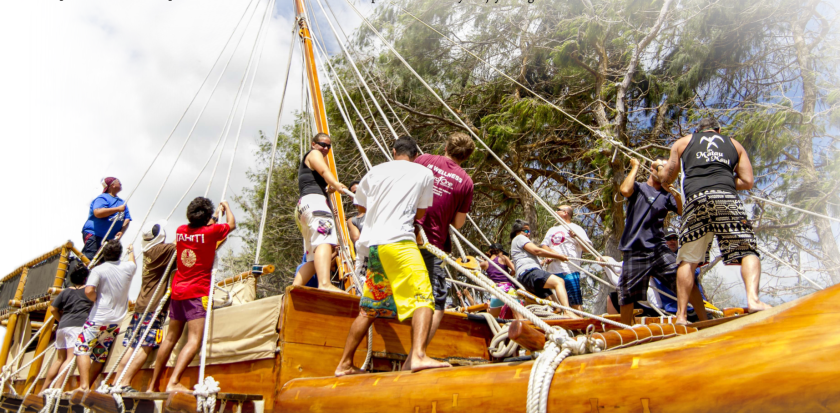A crew of students from BYU–Hawaii’s Jonathan Napela Center for Hawaiian Language and Cultural Studies have embarked on a month-long journey throughout the islands aboard the Iosepa, an authentic Hawaiian voyaging canoe. The 57-foot long, 18-foot wide canoe weighs over nine tons and was constructed from Fijian dakua wood beginning in 2000.

“What makes our canoe special is that it is made completely from wood. There are other voyaging canoes in the world, but the Iosepa is unique in that way,” commented Keith Awai, who works at the Polynesian Cultural Center in the Hawaiian Village.
The seven logs, which were donated by the people of Fiji, were placed under the care of two master carvers—Sione Tuione Pulotu, and Kawika Eskaran. The two created the Iosepa over the course of nine months.

“They carve and create without blueprints,” commented Awai, “It takes experience, teaching, and natural talent—those three factors are needed to become a master.”
The group of Hawaiian Studies majors are led by Kamoae Walk, the lead captain of the voyage. This is the third time the Iosepa has journeyed in Hawaiian waters.
“The crew will learn teamwork, unity, self-reliance; being stuck on a canoe. But they will get along better because they share the same foundation of the gospel. They will dock and stay in places along the way and do service projects. That is what makes it timeless,” said Awai.
According to the Polynesian Cultural Center, William Kauaiwiulaokalani Wallace III, or “Uncle Bill,” director of the BYU–Hawaii Hawaiian Studies program, recalled the notion of creating a Hawaiian sailing canoe first struck him as a young teenager when he would help the kupuna or elders in the Polynesian Cultural Center’s then-new Hawaiian village. Uncle Bill Wallace said the name of the canoe, Iosepa, which means Joseph in Hawaiian, came to him in a dream of his grandfather who, along with other Hawaiians and Polynesians, migrated from Hawaii in 1889 to the high desert of Skull Valley, Utah, and established a community there that thrived for the next approximately 30 years. They named it Iosepa after a revered Latter-day Saint leader, Joseph F. Smith, who had served several times as a Mormon missionary in Hawaii, as well as for Joseph, the 12th son of Israel, in the Old Testament.

The Polynesian Cultural Center established the exhibit titled Iosepa, Voyage of Discovery in June of 2008 in the Hawaiian Village, which included a new halau (or place of learning). Providing protection for the voyaging canoe, the Halau Wa’a O Iosepa showcases videos about the history of the Iosepa, as well as a knot tying station and a celestial navigation compass.
“This is a significant event. As Hawaiians, the ocean is a pathway for us. When the canoe is in the ocean—where it is meant to be—it can breathe. It comes alive,” said Awai.
Photos by Monique Saenz
